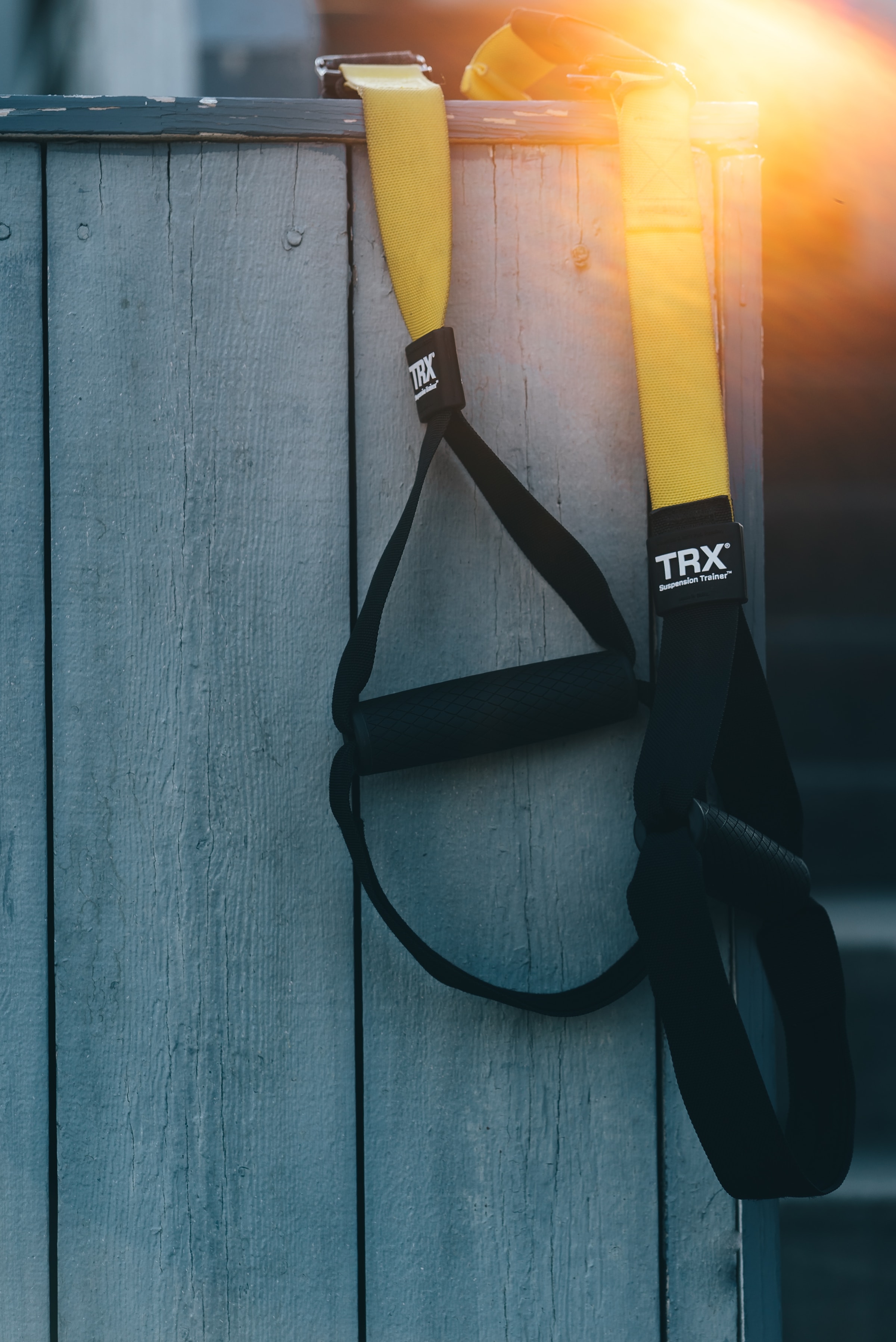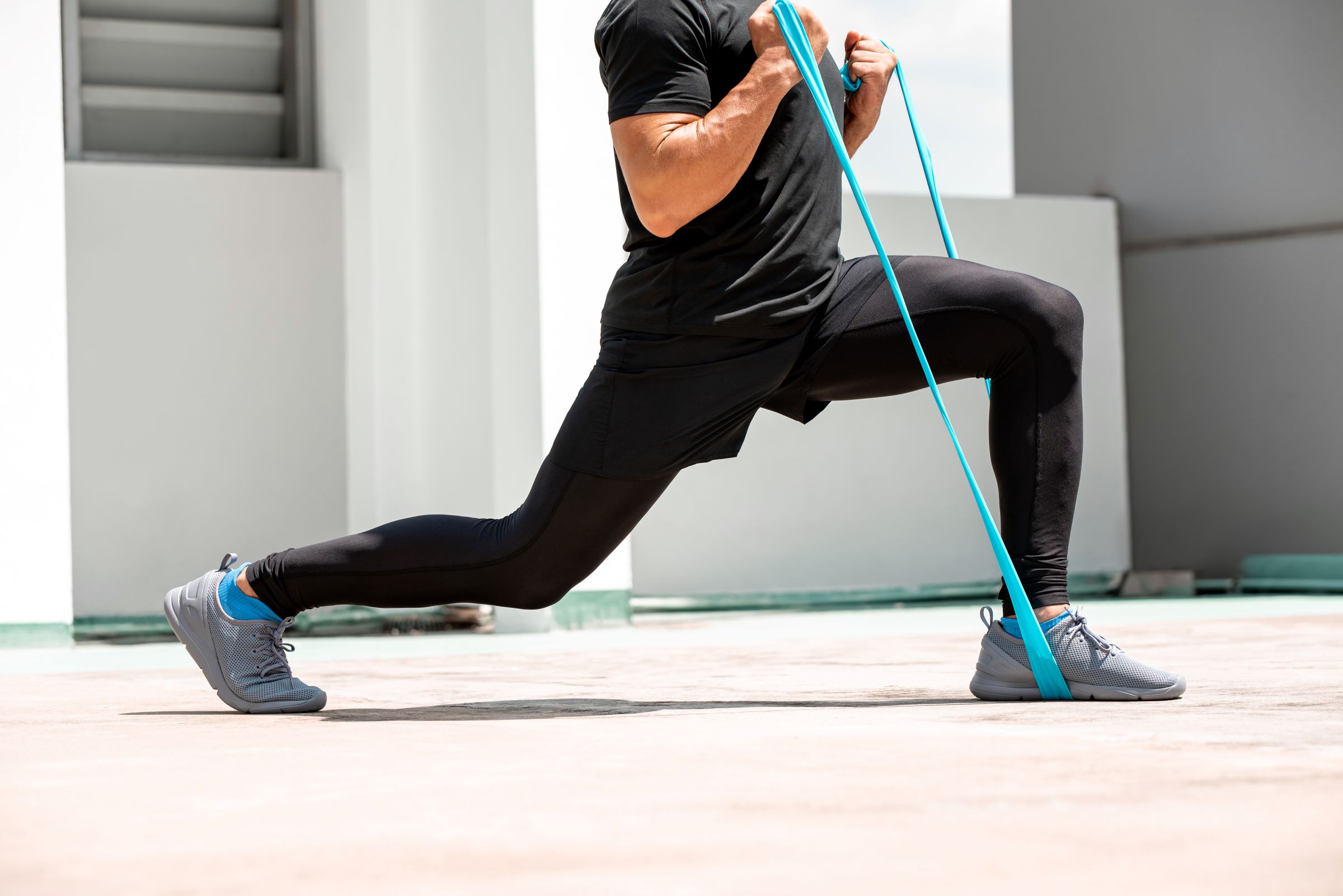
With all the focus on arms and biceps, we often skip out on leg day or forget about our legs that carry us around all day, every day. Resistance bands are a simple and effective way to support and optimize your workouts and strengthen and stretch your legs. The bands are affordable, easy, and convenient to take with you anywhere, and you can target big and small muscle groups simultaneously. From beginners to athletes and experienced exercise enthusiasts, anyone can use resistance bands to stretch, strengthen, and more. We’ve listed the best resistance band workouts to get stronger legs.

How do resistance bands strengthen your legs?
Instead of using free weights, you’re using resistance bands and elastic tension. Resistance bands evenly distribute tension and force you to power up the right muscles and improve your form, balance, and stability. You pull and elongate these tube- or flat-shaped elastic bands to add resistance to your muscles. The added resistance increases the difficulty of the movement. Some bands come with handles; others are one long piece or looped in a circle.
You can target your major lower muscle groups, including your hamstrings, calves, quads, and glutes. Most people believe resistance bands are safer and gentler on your joints and spine and improve the versatility of strength training. Heavy-duty bands with a higher range of resistance tend to work best for leg exercises.

Back squat
Squats are a fundamental exercise that’s beneficial for the legs and glutes. Add resistance bands to your squats with a resistance band back squat.
- Stand on the bar and place your feet shoulder-width apart.
- Bring the band over your head to lay it along the back of your neck and shoulders.
- Adjust the band accordingly to avoid putting too much pressure on your neck.
- Now, you can squat.

Lunge
The lunge is a staple workout that emphasizes the glutes and quads and mobilizes your hips.
- You perform a regular lunge with the resistance band under your front foot and wrapped tightly around your hands.
- Lunge one leg forward with your knee bent and foot on the ground, and keep your other leg back behind you.

Deadlift
A deadlift might make you think about the strongman weightlifting sport. The resistance band deadlift is a different way of performing this popular powerlifting exercise that hits your arms and legs.
- Instead of lifting a bar or loaded barbell off the ground to your hip level and placing it back again, you use the elastic band instead.
- Keep your feet flat on the ground and perform a traditional deadlift while standing on the band and holding the band with both hands.

Bridge
The resistance band bridge or hip thrust works your hips, glutes, legs, hamstrings, and core.
- You place the band around your thighs and under your feet.
- You lie on your back on the floor with your knees bent and your feet flat on the ground on top of the band.
- Tighten your core and glutes and lift your hips up off the ground and back down again.

Tabletop kickback
Fire up your hips, glutes, and core with a resistance band tabletop kickback. The name explains the exercise pretty well because you kick your legs back behind you from a tabletop position. Try to keep your upper body and hips stable.
- Place the band around the arches of both feet and start in the tabletop position.
- While squeezing your core and glutes, kick your right foot back behind you, aiming for a straight line from your head to your heel.
- After 10-15 reps, switch sides.

Clamshell
The resistance band clamshell is an excellent choice when you want to target your hips and inner and outer thigh muscles.
- Place the band around your thighs and lie on your side with your knees bent.
- Rest your head on your right forearm or hand and place your hand on your hip to help keep it stable.
- Lift your top knee up toward the ceiling and back down again to elongate the band.

Leg lift
With resistance band leg lifts, you squeeze your thighs out to the sides and engage your hips.
- Place a band around your ankles and stand with your feet hip-width apart.
- Balance your weight on the left leg and lift your right leg out to the side, stretching and tightening the band without losing the stability of your hips.
- Bring your right leg back down to the ground and repeat for 10-15 reps before switching sides.

Fire hydrant
The fire hydrant has a cool name and targets your glutes and legs at the same time.
- You start in the tabletop position with the resistance band looped around your thighs just above your knees.
- Engage your outer thighs and glutes, and lift your left knee out to the side. Try to keep your hips in the straight tabletop position.
- Bring your left knee back down to the ground where you started and perform 10-15 reps before switching sides.



